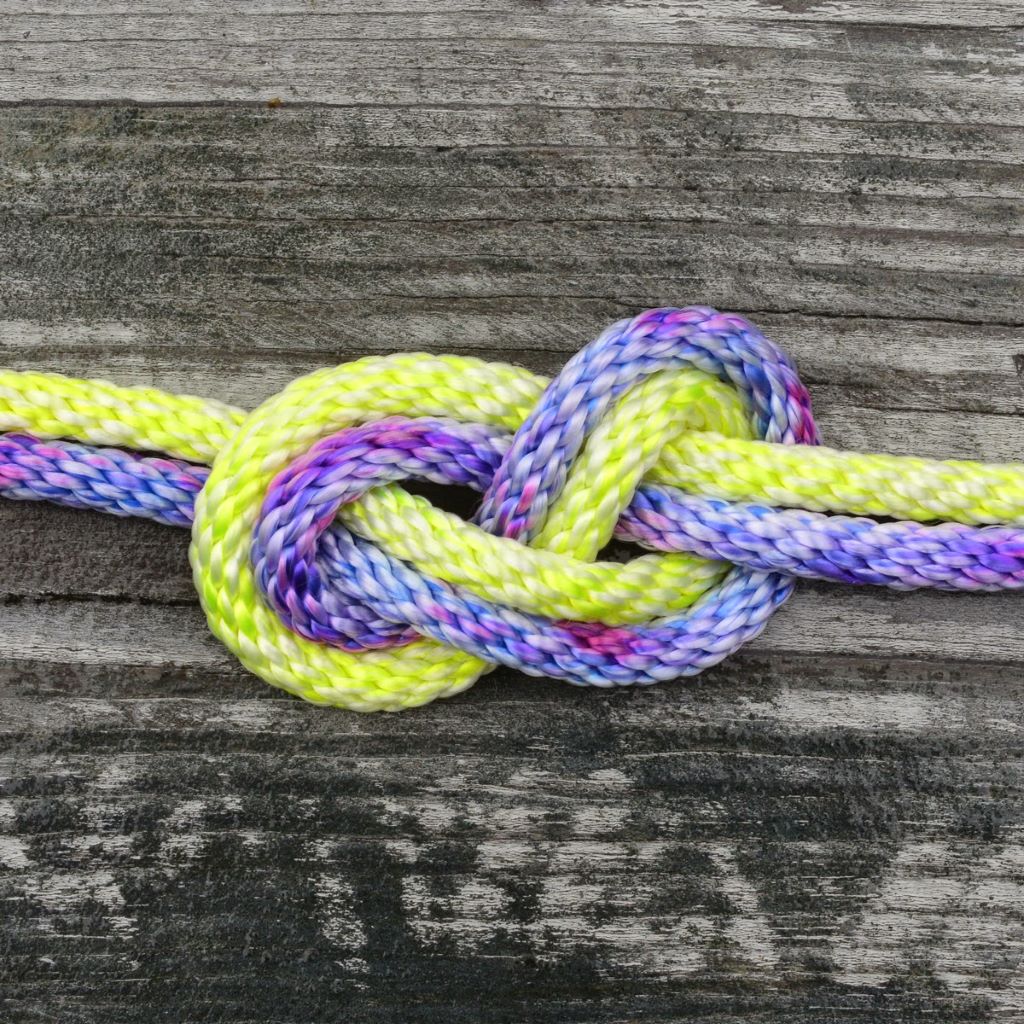Hello there, fellow DIY enthusiast! Are you looking to add some color to your plain, boring nylon rope? Well, you’ve come to the right place. Today, we’ll embark on a colorful journey and learn how to dye nylon rope. Whether it’s for a craft project, camping gear, or just to add some pizzazz to your outdoor adventures, dyeing nylon rope is a fun and creative way to make your gear truly your own. And if you’re looking to add some extra functionality to your nylon rope, consider using nylon rope clamps to secure it in place.
But before we dive right in, let’s set the stage. Imagine you have a plain white T-shirt. It’s comfy, practical, and does its job, but it’s also a bit bland. That’s your nylon rope, in a way. Functional, yes, but lacking that personal touch. Now, think about how a little splash of color can transform that T-shirt into something unique and expressive. That’s what we’re going to do to your nylon rope – give it character and make it truly yours.
Why Dye Your Nylon Rope?
Before we start with the nitty-gritty of the dyeing process, let’s ponder the ‘why’ behind it. Why should you bother dyeing your nylon rope?
- Personalization: Dyeing allows you to infuse your personality and style into your gear. You can choose colors that resonate with you or match your other equipment.
- Visibility: Colored ropes are easier to spot, which can be crucial in outdoor activities like camping, hiking, or climbing. Safety first, right?
- Camouflage: If you’re a fan of bushcraft or hunting, you might want to blend in with your surroundings. Dyeing your rope in earthy tones can help you achieve that stealthy look.
- Artistic Expression: Dyeing nylon rope can be an artistic endeavor. You can experiment with different dyeing techniques and create unique patterns and designs.
Now that you’re motivated, let’s roll up our sleeves and get into the colorful business of dyeing nylon rope.
Materials You’ll Need:
Before you jump into the dyeing process, it’s essential to gather all the necessary materials. Having everything at your fingertips will make the process smoother and more enjoyable. Here’s what you’ll need:
- Nylon Rope: Obviously, you’ll need the nylon rope you want to dye. Make sure it’s clean and free from any dirt or debris.
- Fabric Dye: This is the star of the show. Choose a fabric dye that works well with synthetic fibers like nylon. You can find a variety of dye types, including powder, liquid, and even spray dyes.
- Large Pot or Bucket: You’ll need a vessel large enough to accommodate your nylon rope comfortably. A stainless steel pot or plastic bucket works well.
- Hot Water: The dyeing process involves immersing the rope in hot water, so you’ll need a way to heat it up. A stove or an electric kettle will do the trick.
- Stirring Utensil: A long spoon or stick for stirring the dye and rope.
- Gloves: Protect your hands from getting stained by wearing rubber or latex gloves.
- Plastic Sheets or Drop Cloth: To cover your workspace and prevent dye spills.
- Salt or Vinegar: Depending on the type of dye you’re using, you may need salt or vinegar as a dye fixative.
- Timer: To keep track of the dyeing time.
- Rinse Bucket: A separate bucket for rinsing the dyed rope.
- Mild Detergent: To wash and clean the rope after dyeing.
- Clothesline or Drying Rack: For drying the freshly dyed rope.
Alright, you’ve got your materials lined up, and you’re ready to get your hands colorful. Let’s move on to the step-by-step process of dyeing nylon rope.
Step-by-Step Guide: How to Dye Nylon Rope
Note: The following method describes dyeing nylon rope using a hot water immersion technique. Always follow the specific instructions provided with your chosen fabric dye, as they may vary slightly.
Step 1: Prepare Your Workspace
Imagine you’re setting up a canvas for your artistic masterpiece. Lay down plastic sheets or a drop cloth to protect your working area from any potential dye spills. You don’t want your kitchen or backyard turning into a rainbow!
Step 2: Wear Protective Gear
Just like a painter wouldn’t go without an apron, you shouldn’t dive into dyeing without protection. Put on your gloves to shield your hands from dye stains.
Step 3: Prepare the Rope
Inspect your nylon rope to ensure it’s clean and free of any dirt or debris. If it’s not, give it a good wash and let it dry completely before proceeding. A clean canvas is essential for the dye to adhere properly.
Step 4: Mix the Dye
Follow the instructions on your fabric dye packaging to mix the dye solution. This usually involves dissolving the dye in hot water, adding any necessary fixatives (like salt or vinegar), and stirring until it’s well-mixed. Make sure to use a container that won’t stain, as some dyes can be quite potent.
Step 5: Heat the Water
You’re about to give your rope a warm bath! Heat up a large pot of water on the stove or use an electric kettle. You’ll need enough water to fully immerse your nylon rope.
Step 6: Submerge the Rope
Carefully place the clean nylon rope into the hot water. Ensure it’s fully submerged. This step helps open up the nylon fibers and prepares them to absorb the dye.
Step 7: Apply the Dye
Now comes the fun part! Pour the prepared dye solution over the submerged rope. Use your stirring utensil to make sure the dye evenly coats the rope. If you want to create a gradient effect, you can dip only part of the rope or use a sponge to apply the dye selectively.
Step 8: Stir and Simmer
Think of your rope as a teabag steeping in hot water. Stir it gently to ensure the dye reaches every nook and cranny. Keep the water hot but not boiling, and let the rope simmer in the dye bath for the time specified on your dye’s instructions. This can vary depending on the dye type and color intensity you desire.
Step 9: Rinse and Soak
Once the dyeing time is up, remove the rope from the dye bath. Carefully rinse it under cold running water to remove any excess dye. Then, transfer the dyed rope to a separate bucket filled with cold water and a splash of mild detergent. Let it soak for about 10-15 minutes. This helps remove any remaining dye and sets the color.
Step 10: Final Rinse and Dry
Give your dyed rope a final rinse under cold water until the water runs clear. Then, hang it on a clothesline or drying rack to dry completely. Make sure it’s not exposed to direct sunlight, as prolonged exposure to UV rays can cause fading.
Step 11: Clean Up
Time to clean your workspace! Dispose of any leftover dye solution, and clean your utensils and the dyeing vessel thoroughly to prevent accidental staining.
Step 12: Admire Your Handiwork
Once your dyed rope is dry, take a moment to appreciate your colorful creation. It’s now ready for action, whether you’re using it for crafts, outdoor activities, or any other adventure that comes your way.
FAQs
- Can I dye nylon rope with regular fabric dye?
Most fabric dyes are designed to work with natural fibers like cotton or wool. To dye nylon rope effectively, it’s best to use a dye specifically formulated for synthetic materials. Look for dyes labeled as suitable for nylon or synthetic blends.
- How do I prevent the dye from fading over time?
To help preserve the color of your dyed nylon rope, avoid prolonged exposure to direct sunlight. UV rays can cause fading over time. Additionally, using a dye fixative, like vinegar or salt, as per the dye manufacturer’s instructions, can help set the color.
- Can I mix different dye colors to create custom shades?
Yes, you can experiment with mixing different dye colors to create unique shades. Just be sure to test your custom dye mixture on a small section of the rope before dyeing the entire length to ensure you achieve the desired color.
- Is it safe to use dyed nylon rope for climbing or other critical applications?
It’s not recommended to use dyed nylon rope for climbing or any other critical applications where safety is a concern. Dyeing may affect the structural integrity of the rope, and it’s essential to prioritize safety over aesthetics in such cases. Always use certified and safety-tested ropes for activities like climbing.
- Can I dye a rope that’s already been used and is a bit worn?
It’s possible to dye a used nylon rope, but keep in mind that the dye may not adhere as evenly or vibrantly to worn or dirty ropes. Before dyeing, thoroughly clean and inspect the rope to ensure it’s in suitable condition for the dyeing process.
Conclusion
There you have it – a comprehensive guide to dyeing nylon rope like a pro! Now, armed with the knowledge and materials, you can embark on your colorful DIY adventure. Whether you’re adding a touch of personality to your camping gear or crafting something entirely new, dyeing nylon rope is a rewarding and creative endeavor, just as understanding how wire rope clips work can enhance your DIY projects and outdoor adventures. So, go ahead and make your gear stand out with a splash of color!






